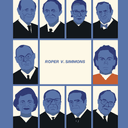
When the U.S. Supreme Court banned the death penalty for juvenile offenders in 2005 in Roper v. Simmons, Justice Anthony Kennedy’s opinion for the Court acknowledged the inherent arbitrariness in selecting an age cutoff. “The qualities that distinguish juveniles from adults do not disappear when an individual turns 18,” he wrote. “However, a line must be drawn.” New neuroscience research suggests that the age-18 line may be too low. The court’s opinion in Roper found that a national consensus had developed against subjecting juveniles to the death penalty based upon behavioral evidence that juveniles are less able to understand the consequences of their actions, more susceptible to peer pressure, and less able to control their impulses. One word missing from the Roper court’s analysis of the age-18 death-penalty cutoff: “brain.” An August 12, 2018 article for The Marshall Project by Beth Schwartzapfel explores the judicial system’s response to new neurological research on brain development and whether 18 is the most appropriate age of eligibility for the harshest sentences, including the death penalty and mandatory life without parole. Brain research now clearly demonstrates that those portions of the brain that regulate impulse control and decision-making do not fully mature until well into a person’s 20s, and defense lawyers have begun to argue that the same limitations on extreme punishments applicable to juveniles should apply to youthful offenders in “late adolescence,” between the ages of 18 and 21. Brain research by Temple University psychology professor Laurence Steinberg (pictured), a national expert in adolescent brain development, found that impulsive thrill-seeking and the need for immediate gratification peaks in late adolescence around age 19, before declining through an individual’s 20s. In a 2017 case in which a Kentucky trial judge declared the death penalty unconstitutional for defendants charged with committing a crime before age 21, Steinberg testified, “Knowing what we know now, one could’ve made the very same arguments about 18‑, 19- and 20-year-olds that were made about 16- and 17-year-olds in Roper.” Judge Ernesto Scorsone agreed, writing, “If the science in 2005 mandated the ruling in Roper, the science in 2017 mandates this ruling.” On February 5, the American Bar Association House of Delegates voted overwhelmingly to adopt a resolution calling for an end to the death penalty for offenders who were 21 or younger at the time of the crime. According to a report accompanying the resolution, “there is a growing medical consensus that key areas of the brain relevant to decision-making and judgment continue to develop into the early twenties.” In September 2017, the U.S. Supreme Court declined to review Ohio death-row prisoner Gary Otte’s claim that the death sentence was unconstitutionally imposed in his case because he was only 20 years old at the time of the offense. Otte was executed September 13, 2017.
(Beth Schwartzapfel, The Right Age to Die?, The Marshall Project, August 12, 2018.) See Juveniles.


